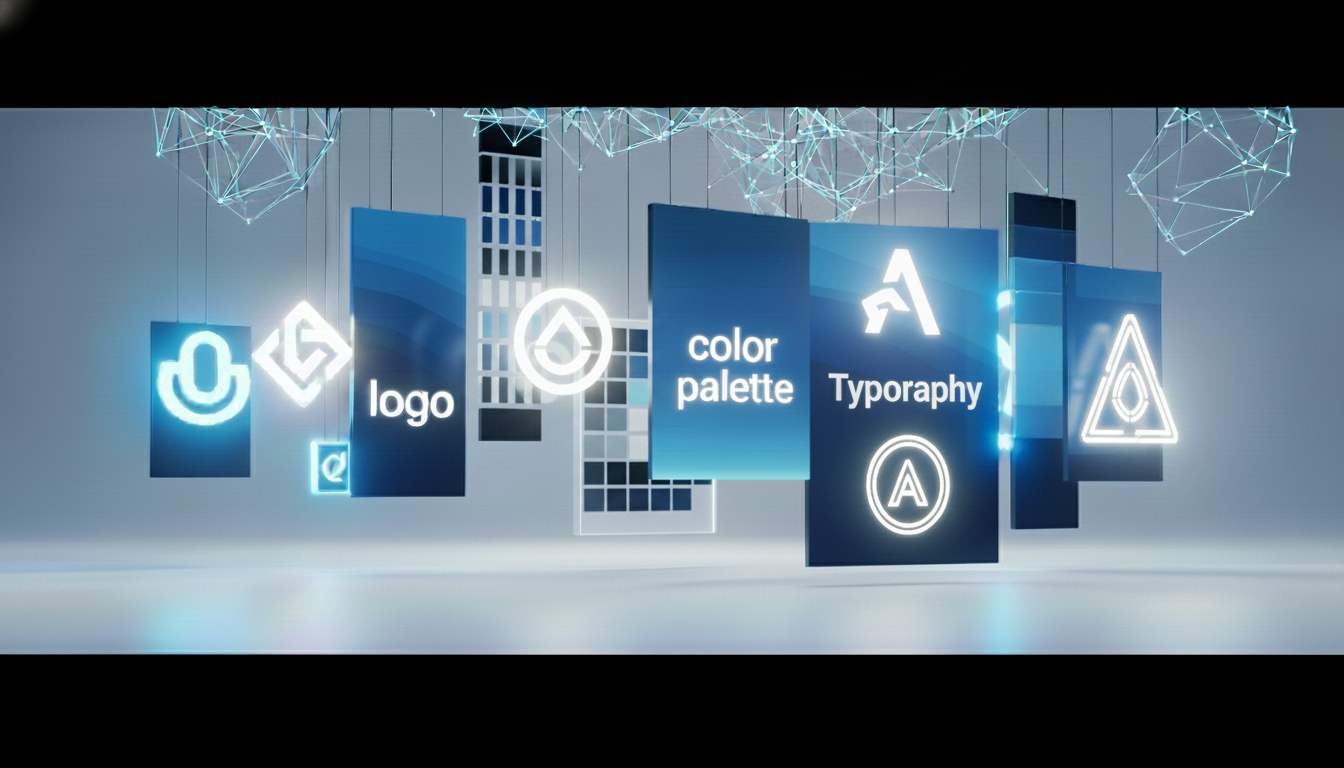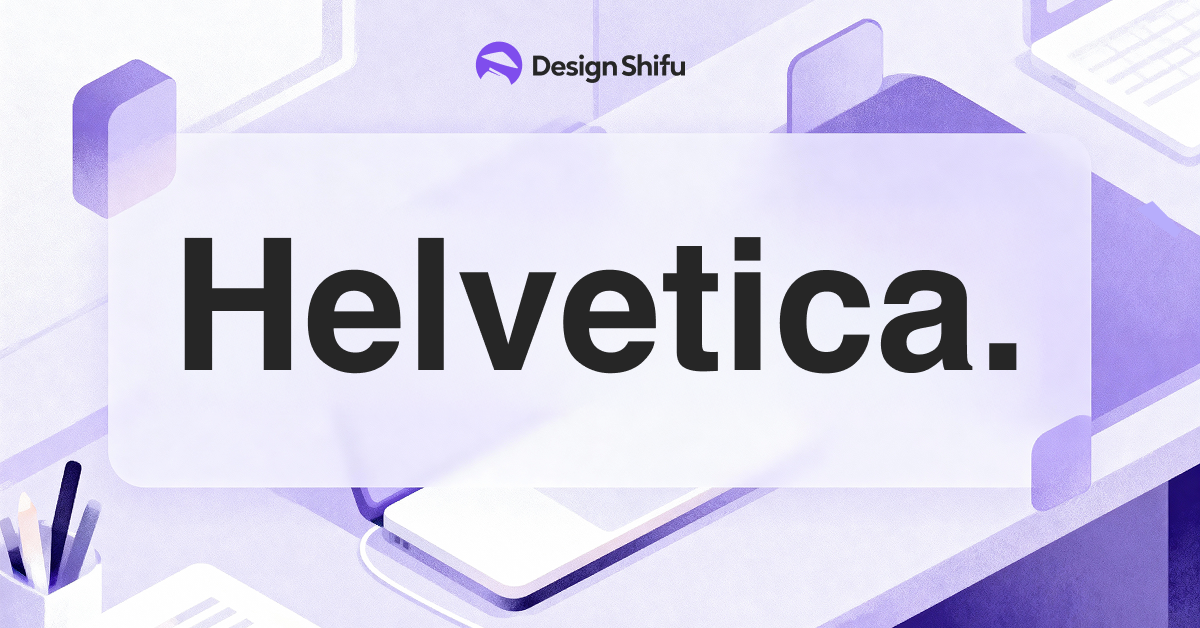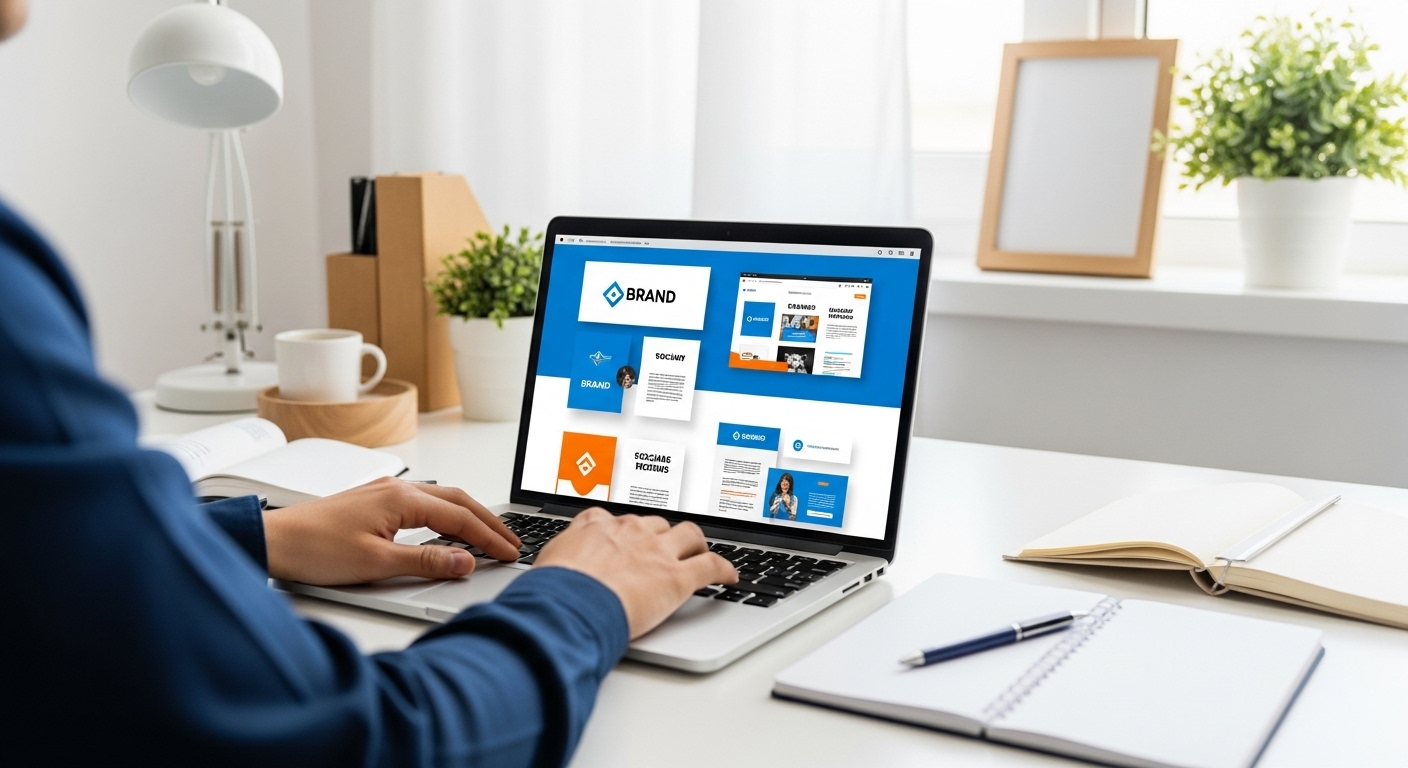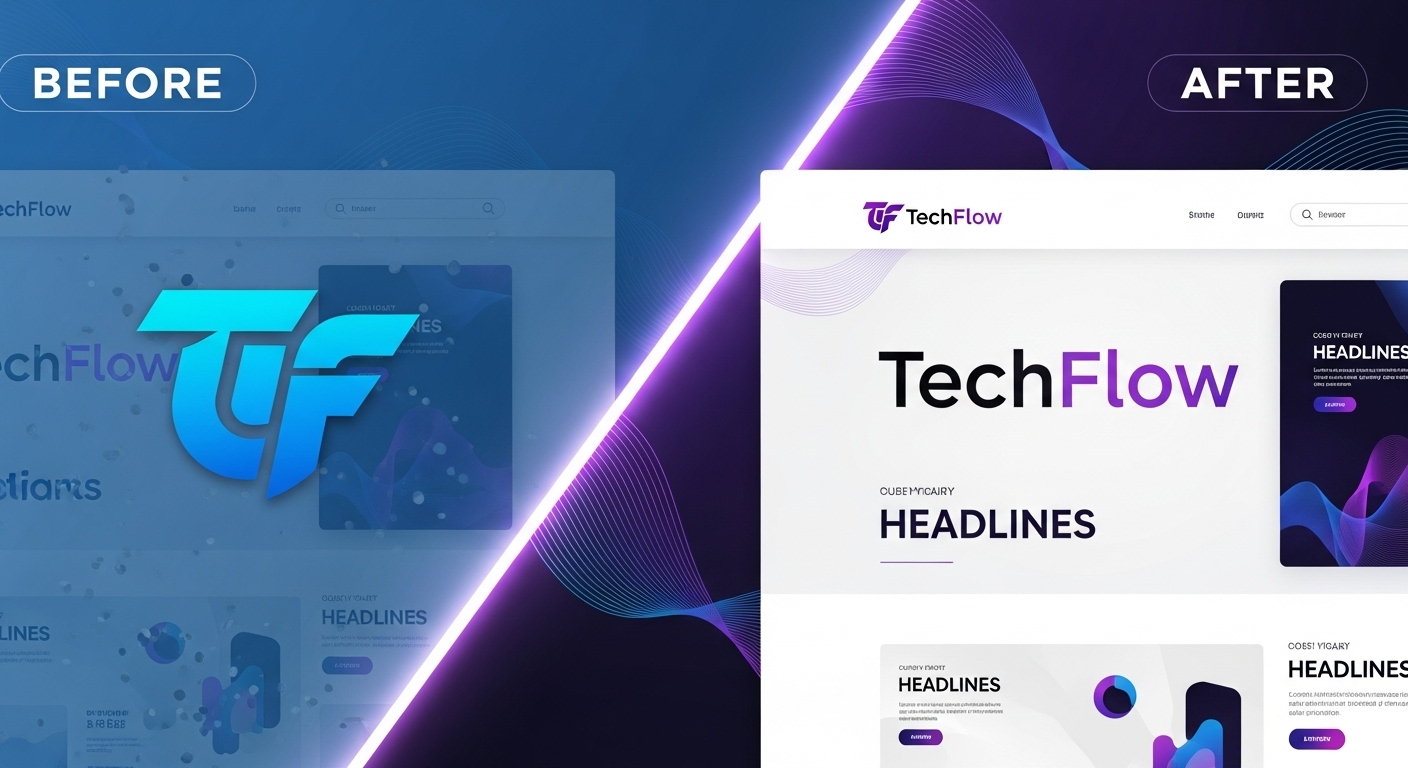When I launched my first business back in 2019, I made a classic mistake. I spent $2,000 on a fancy logo from a designer who promised “premium branding.” What did I get? Just a logo file. No colors, no fonts, no guidance on how to use it anywhere.
I learned the hard way that a logo alone isn’t a brand. You need a complete brand identity starter pack that actually helps you look professional everywhere from your website to your Instagram posts to your business cards.
If you’re starting a new business right now, you’re probably overwhelmed. There’s so much to figure out. But here’s the good news: you don’t need to spend thousands on branding. You just need the right pieces in the right order.
Let me show you exactly what should go in your visual identity package and why each piece matters.
TL;DR
- Every new business needs a complete brand identity starter pack, not just a logo to look professional and consistent across all platforms.
- This guide explains what to include: versatile logo versions, a color and typography kit, brand guidelines, social media templates, and essential marketing materials.
- It also breaks down costs, common mistakes, and how cohesive visuals directly boost sales and conversions.
- Start simple, invest smart, and grow your visual identity as your business scales.
Why New Businesses Need a Visual Identity (Not Just a Logo)
Think about the last time you saw a business that looked… off. Maybe their Instagram had different colors than their website. Or their fonts looked like they picked them randomly each time.
You probably didn’t trust them as much, right?
That’s what happens when you skip the visual identity for new businesses. You look unprofessional without even realizing it.
Here’s what I noticed with my own customers: The ones who had a complete branding kit made sales 3x faster than those who just had a logo. Why? Because consistency builds trust. When everything looks like it belongs together, people assume you’re organized and reliable.
Your visual identity is basically your business’s outfit. You wouldn’t wear one shoe from Nike and one from Adidas to a job interview. So why would you use random fonts and colors across your business?
What’s Included in a Brand Identity Starter Pack
Let’s break down the essential pieces. I’m going to be honest about what you actually need versus what’s just nice to have.
1. Logo Variations and File Formats
Not just one logo, you need three versions:
- Primary logo (the full version with your business name)
- Icon or symbol (for your social media profile pictures)
- Horizontal version (for website headers and email signatures)
I made this mistake with my second business. I only had a tall, vertical logo. It looked terrible on my website header and got cut off in email signatures. Don’t do this.
Your logo should come in different file types too: PNG files for digital use and vector files (like SVG or AI) for printing on shirts or signs.
2. Color Palette and Typography Kit
This is where most people mess up. They pick colors they like instead of colors that work.
Your color palette and typography kit should include:
- 2-3 main brand colors (your primary and secondary colors)
- 2-3 neutral colors (usually grays or beiges for backgrounds)
- 1-2 accent colors (for buttons and highlights)
For fonts, keep it simple:
- One font for headings (this can be more decorative)
- One font for body text (this MUST be easy to read)
Real example: My coffee shop client wanted to use five different colors. I showed her how Starbucks uses basically just green, white, and black. She cut it down to three colors and suddenly everything looked more professional.
3. Brand Guidelines Template
This is the instruction manual for your brand. It tells you (and anyone you hire) exactly how to use everything.
Your guidelines should cover:
- When to use each logo version
- What your colors are (with exact color codes)
- How much space to leave around your logo
- Which fonts to use where
- What NOT to do (like stretching your logo or using wrong colors)
I keep mine in a simple PDF. Nothing fancy. Just clear rules that anyone can follow.
4. Social Media Templates
If you’re not on social media, you’re invisible. But creating posts from scratch every time is exhausting.
Your brand identity packages for startups should include 5-10 templates for:
- Instagram posts and stories
- Facebook posts
- LinkedIn updates
- Pinterest pins (if relevant)
These templates should already have your colors, fonts, and logo placement figured out. You just swap in your content and go.
5. Basic Marketing Materials
Even if you’re mostly online, you’ll need these eventually:
- Business card design
- Email signature
- Letterhead template
- One-pager or brochure layout
My consulting client Sarah told me she landed a major contract because she had a professional one-pager ready when a potential customer asked. Her competitor just sent a messy email with random information. Guess who looked more prepared?
How Much Should You Spend on Visual Identity Design Services?
Let’s talk about money because I know you’re wondering.
I’ve seen visual identity design services range from $500 to $50,000. Yes, really.
Here’s my honest breakdown:
- DIY approach ($0-$200): Use Canva and design it yourself. This works if you have some design sense and lots of time. You’ll spend $120/year on Canva Pro and maybe buy some fonts.
- Small business branding kit ($500-$2,000): Hire a freelancer or use a design service that specializes in affordable brand identity packages. This is the sweet spot for most new businesses.
- Full agency package ($5,000-$50,000): Only worth it if you’re already making good money or have investor funding. Most startups don’t need this yet.
I usually recommend the middle option. Spend $1,000-$1,500 to get it done right, then invest your money in actually running your business.
Solopreneurs don’t need huge budgets to look professional. With affordable design systems for one-person brands, you can keep your visuals consistent, scalable, and budget-friendly from day one.
The Mistakes I See New Business Owners Make
Let me save you from the painful lessons I learned:
- Picking trendy over timeless In 2020, everyone wanted that millennial pink and gold combo. Now it looks dated. Choose colors and styles that’ll still work in 5 years.
- Too many fonts. I once used four different fonts in my first website. It looked like a ransom note. Stick to two fonts maximum.
- Not thinking about printing, digital looks different than print. Those bright colors on your screen might print as neon pink on your business cards. Always test and print a sample.
- Copying competitors too closely Yes, look at successful businesses in your industry. But don’t copy them. My friend launched a bakery with almost identical branding to a national chain. She got a cease-and-desist letter six months later. Legal fees: $3,000.
Why Cohesive Brand Visuals Actually Matter for Sales
Here’s something I tracked with my clients: businesses with cohesive brand visuals convert 34% better on their websites than those with inconsistent branding.
Why? Because people make decisions fast. Really fast. Studies show you have about 50 milliseconds for someone to form an opinion about your website.
When everything looks consistent and professional, their brain relaxes. It says, “This is legitimate. I can trust this.”
When things look scattered, their brain goes, “Something’s off. Maybe I should keep looking.”
I saw this with my own eyes. After I redid my consultancy’s branding with a complete package, my website conversion rate jumped from 2% to 4.5%. Same website copy. Same services. Just a more consistent brand look across every page.
How to Choose the Right Startup Brand Identity Design Partner
If you’re hiring someone, here’s what to look for:
- Look at their portfolio: Do their past projects look professional? More importantly, do they look DIFFERENT from each other? If every design looks the same, they’re using templates without customization.
- Ask about revisions: Good designers include 2-3 rounds of changes. If someone says “unlimited revisions,” they either have no boundaries or they’re lying.
- Check what’s included: Some designers only give you JPG files. You need source files (AI, PSD, or at least high-res PNG files with transparent backgrounds).
- Timeline matters: Startup brand identity design typically takes 2-4 weeks. If someone promises it in three days, it’ll probably look rushed. If they say three months, they’re overcomplicating it.
- Get everything in writing: What files do you get? How many logo concepts? What happens if you hate everything? Put it in the contract.
My Recommendation: Start Simple, Scale Smart
When I work with new businesses now, I always say: start with the essentials, but make them good quality.
You need:
- Three logo versions
- A color palette (3-5 colors)
- Two fonts
- Basic brand guidelines
- A few social media templates
That’s it for day one. You can add more later when you’re making money.
Don’t let perfect branding stop you from launching. But also don’t launch with terrible branding that you’ll have to redo in six months.
The sweet spot? Invest in a solid brand identity starter pack now. Something professional that gives you room to grow but doesn’t break the bank.
Key Takeaways
- A logo isn’t a brand. Your visual identity includes colors, fonts, and usage rules that create a cohesive look.
- Consistency builds trust. Businesses with unified visuals convert up to 34% better online.
- Include 5 essentials: multi-version logo, color palette, typography, brand guide, and templates.
- Budget wisely: Expect to spend $500–$2,000 for a solid startup brand identity package.
- Avoid rookie mistakes: too many fonts, trendy colors, and inconsistent print/digital visuals.
- Start simple, scale later. A lean but consistent brand foundation is enough to launch professionally.
Your Next Step
If you’re ready to get your branding sorted, here’s what to do:
- Option 1: Start with a mood board. Collect 10-15 images that represent how you want your brand to feel. This helps whether you’re hiring someone or DIYing it.
- Option 2: Look at three businesses you admire in your industry. What do their visuals have in common? What makes them look professional?
- Option 3: Set a budget. Be realistic about what you can spend, then explore affordable brand identity packages that fit.
When you’re ready to bring your visuals together, explore Design Shifu’s services to get a complete, professional starter pack tailored for new businesses.
FAQs
What’s the difference between a logo and a brand identity?
A logo is just one visual mark of your brand. A full brand identity includes your color palette, fonts, imagery style, and guidelines for how everything works together.
How much does a brand identity starter pack cost for new businesses?
Do I really need brand guidelines if I’m a solo entrepreneur?
Can I create a brand identity myself using Canva?
What happens if my brand identity looks inconsistent?
How long does it take to build a startup brand identity?





